This site uses cookies
Read moreMaterials
Partners
Portugal
iron, electronic material, painting, audiovisual material
Pedreira
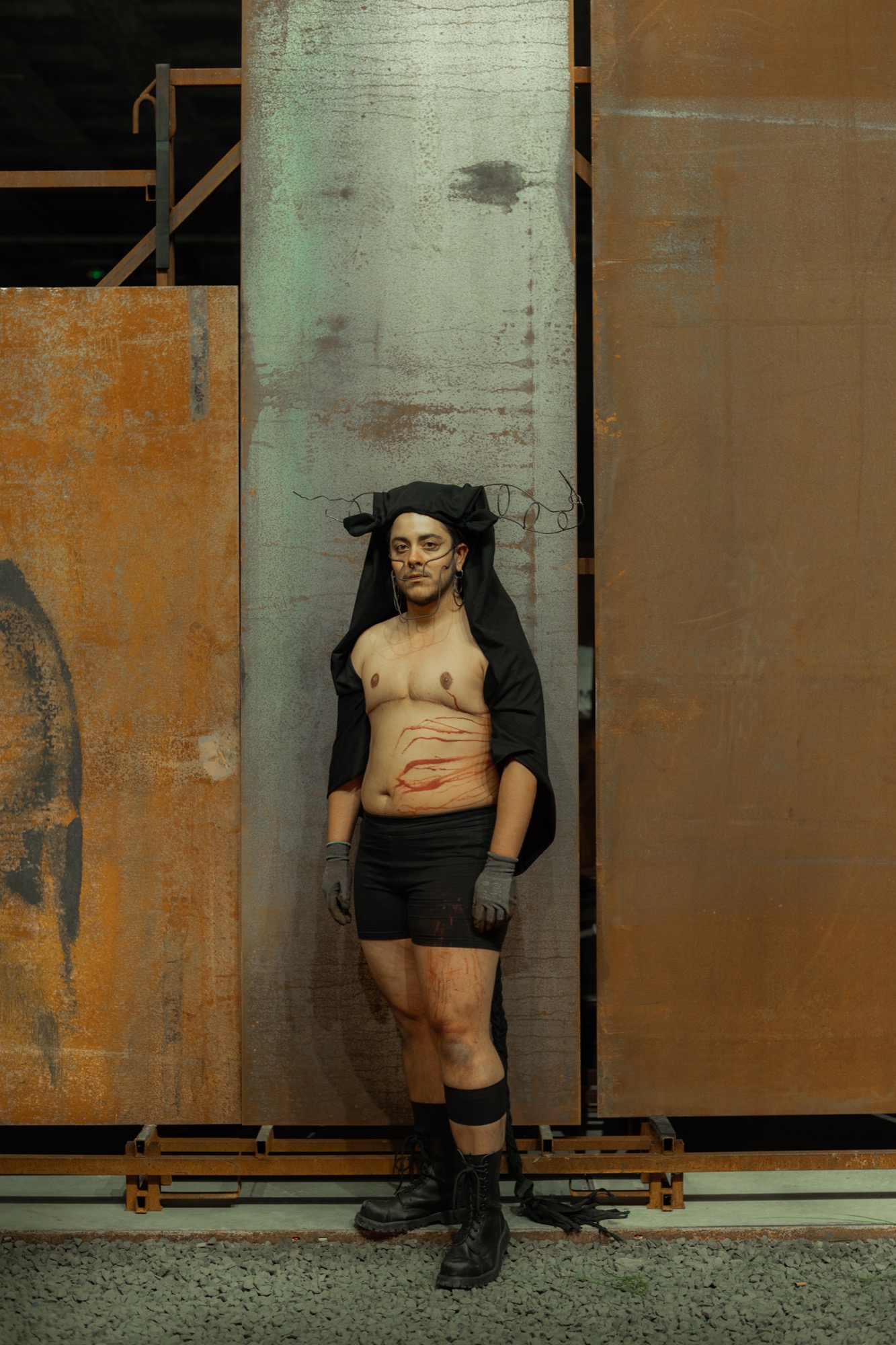
Tiago Lêdo
programme cycle 03 / Dildotauro de Lide
Tiago Aires Lêdo , born in 1992, is a media artist from Porto and co-founder of the media and performing arts association - Fúria de Boi. Interested in militant sound works, generative music and interaction, he has participated in film, television, videogame, music, installation and educational projects.
Lêdo holds a MSc in Multimedia — Interactive Music and Sound Design, from the Faculty of Engineering of the University of Porto (FEUP); and a Bachelor's degree in Cinema and Audiovisual from the Higher School of Arts of Porto (ESAP).
His music works have been released under the aliases rizumirai, 空のリズム, ghostrhythm and Som Flores. He completed the Introduction to Acting Course of Teatro Universitário do Porto (TUP), and he currently teaches musical technology/programming at L.E.M (Music Experimentation Laboratory) for the Orquestra Jazz de Matosinhos' educational program (CARA OJM).
Os dias me viraram do avesso e desviraram,
as horas me trançavam para me desarrumar.
Quanto mais me busquei nos espelhos secretos,
mais me perdi de mim.
Lya Luft, em O Tempo é um Rio que Corre
The third cycle of the No Entulho artist residency program was organized in partnership with Pedreira, where the transmasculine artisttransmasculine artist Tiago Aires Lêdo took as the starting point for his research a letter written but not sent by himself and Tiago Colaço in 2018 to the Portuguese Communist Party, requesting their disaffiliation due to the "[unethical] position taken by the PCP regarding the bill proposed by the PAN party [People-Animals-Nature] that aimed to abolish bullfighting." This written manifesto by Lêdo and Colaço thus marks their decolonial commitment by suggesting that the populations who "would be left without this activity are not prevented from developing any other activity that does not involve unnecessary aggression towards an animal" and further notes that "the Portuguese Communist Party had the unique opportunity to stand with both workers and animals, but they chose only one." In the course of the letter by Lêdo and Colaço, the masculinity of the "comrades and friends" emerges, through their decisions, as a political cartography and practice of governance, given that these political categories that organize our public life are masculine categories. Therefore, the logic of the State is configured from a masculine grammar and embodied as a representation of masculinities, and for this reason, this masculine bodily imaginary is usually associated with forms of power and action, especially those coded by the language of war, weapons, and violence.
Accompanying Lêdo in his artist residency, I learned that the "objectified and victimized [docile] bull [in a state of aggression]" described in his letter served as a reflection of himself before the world, and this vision was transmuted during the research process into one of the constitutive myths of the Labyrinth, the Minotaur. Subsequently, Lêdo explored the different existing ways of organizing the experience in the world of what has come to be called a man, ultimately to explore a fictional process of self-production, of his gender, and his male body.
As a transfeminist, I find it important to emphasize the understanding that the CIScolonial category of man was consolidated as a historical process, or rather, as a process of historical fabulation. This means that there is nothing essential about being a man since there is nothing from a biological standpoint that constitutes the social practice of masculinity, nor is there anything inherent in the much-discussed testosterone. Moreover, it is important to mention that science is a cultural activity because nature is a creation of culture, whose traces of its creation have been erased, which is why it seems that nature has always been there. In this light, testosterone constitutes a type of body that has been conventionally considered a male body but may constitute other types of bodies in other societies, meaning these bodies may not be the same as what we understand as a male body, nor may they occupy the same social place as what we think of as a male body. For example, in the work "Sex and Temperament in Three Primitive Societies" (1935), the result of fieldwork in Papua New Guinea, anthropologist Margaret Mead shows other ways of organizing and inscribing corporeality in the world, ways that are not mediated by a CIScolonial constitution of biological sex that corresponds to a binary gender order that is not only binary but also CISheterosexual, white, static, monogamous, and Christian, as it conceptualizes penis and vagina as complementary opposites.
Thus, by entering the space of an industry—also associated with the Western repertoire of masculine images—the artist Tiago Aires Lêdo, in his current experimental tragic-performative Minotaurian narrative, challenges this world with his own body, thereby generating a horizontalized desire to speak for himself by presenting his trans reinterpretation of the Minotaur. In this way, despite having learned from Ariadne-Hilda to tread his own path by unraveling the threads that so disturb him, as seen in his action, Minotaur-Lêdo deconstructs his entire process and presents it openly, similar to the writing of a durational diary, where he not only narrates the right to do what he desires with his own body but also invites people to enter his Labyrinth to lose themselves and find themselves within it.
Text by artist and transvestite curator Hilda de Paulo.

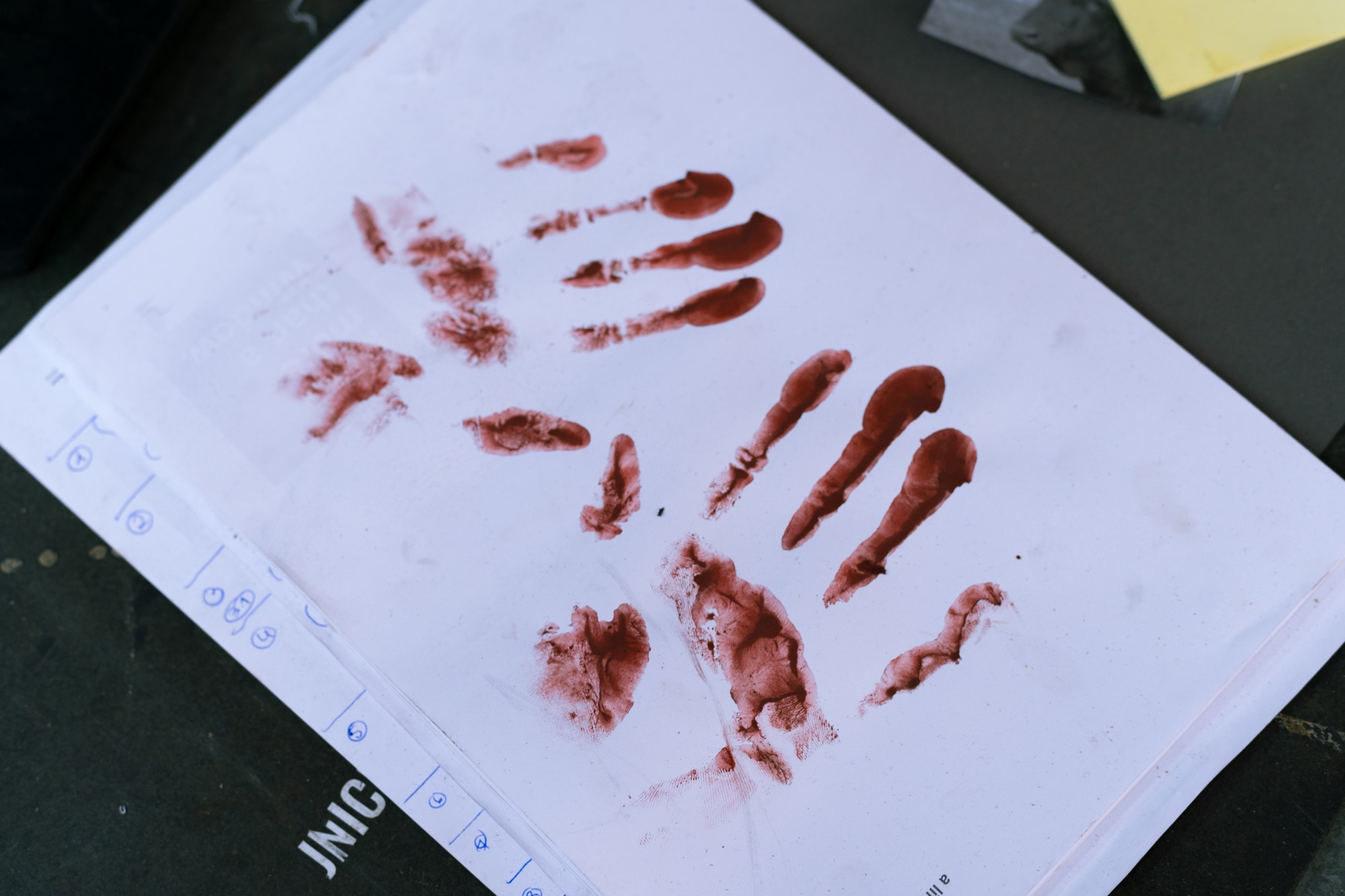

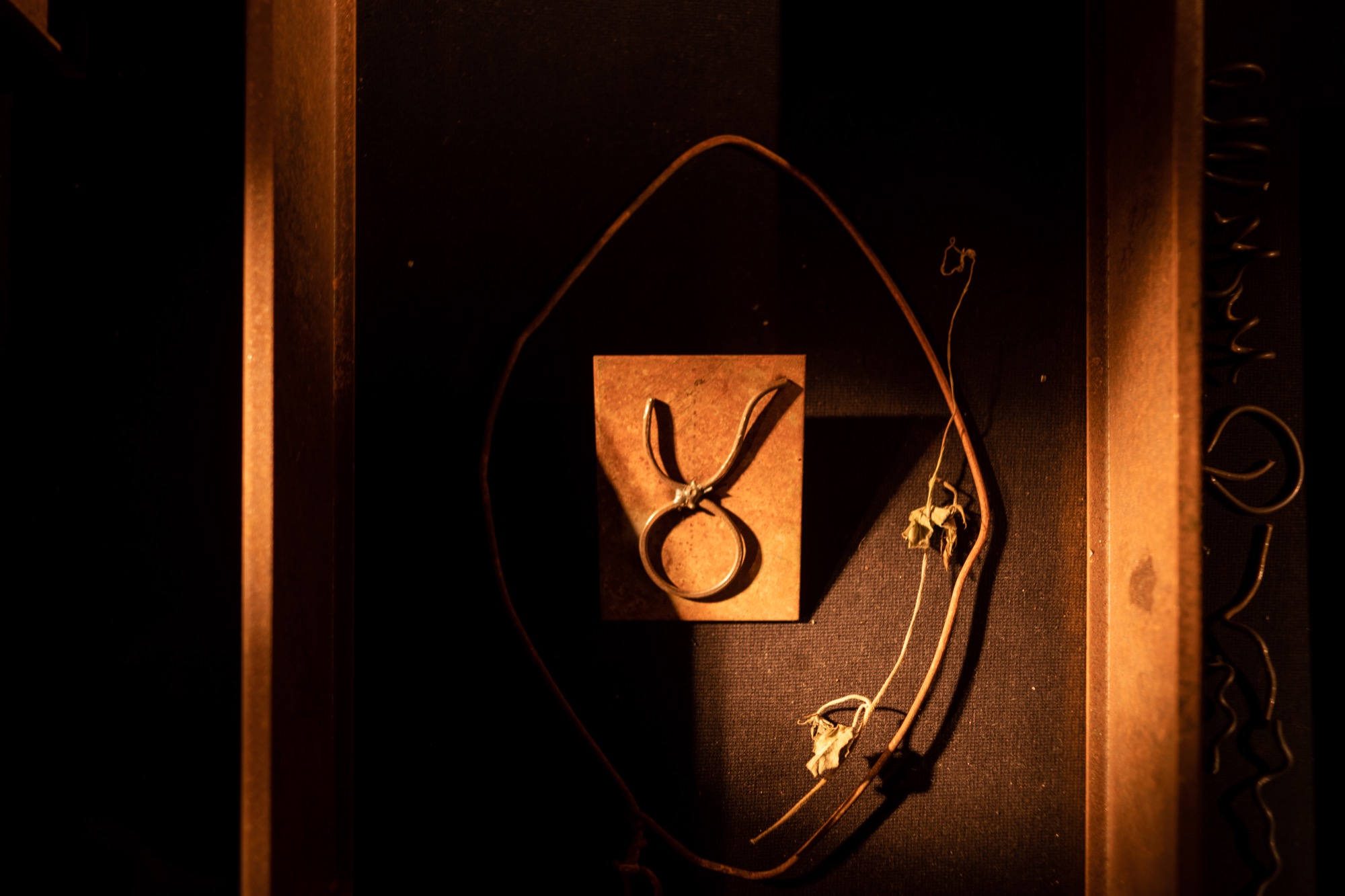
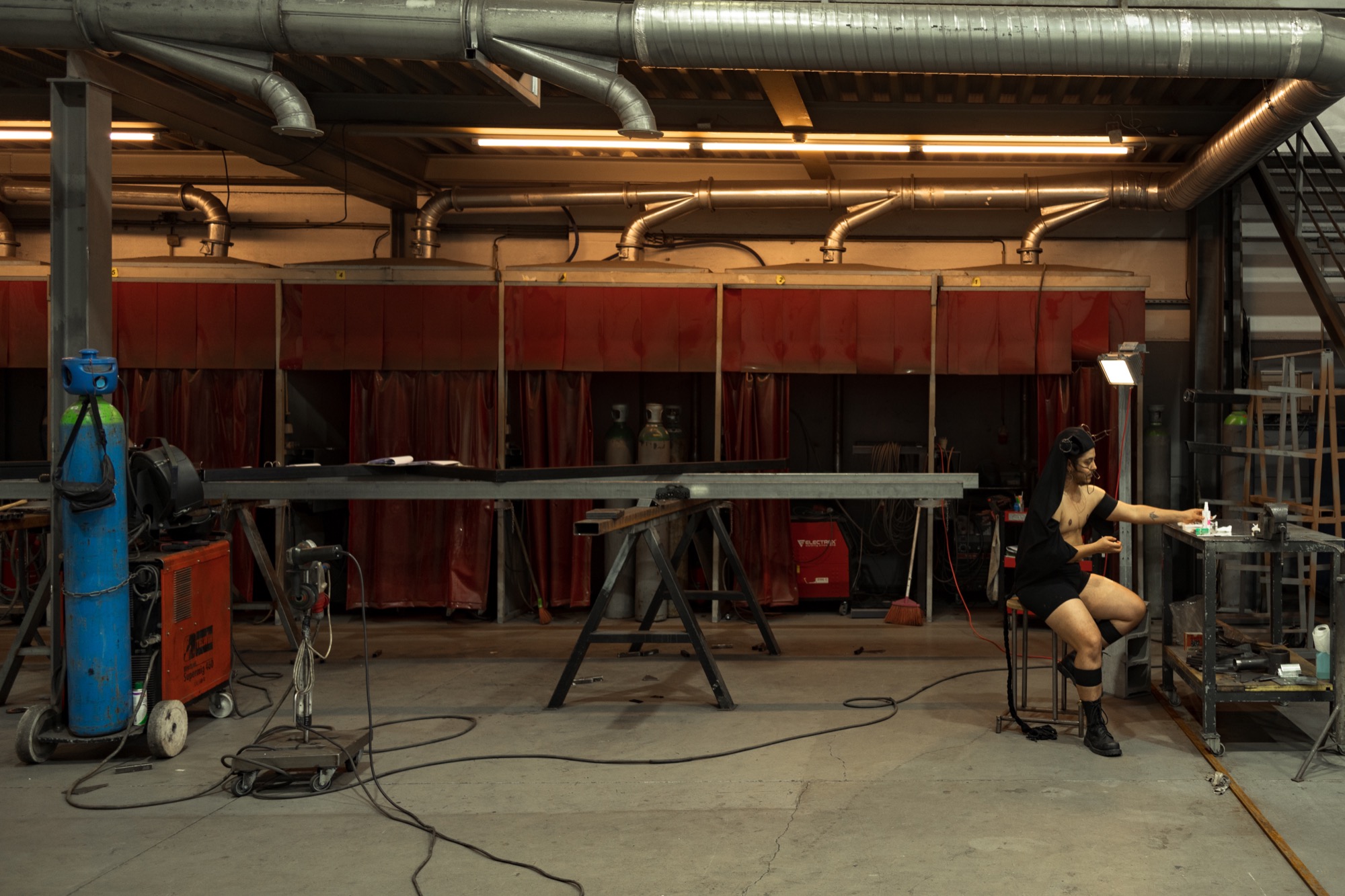


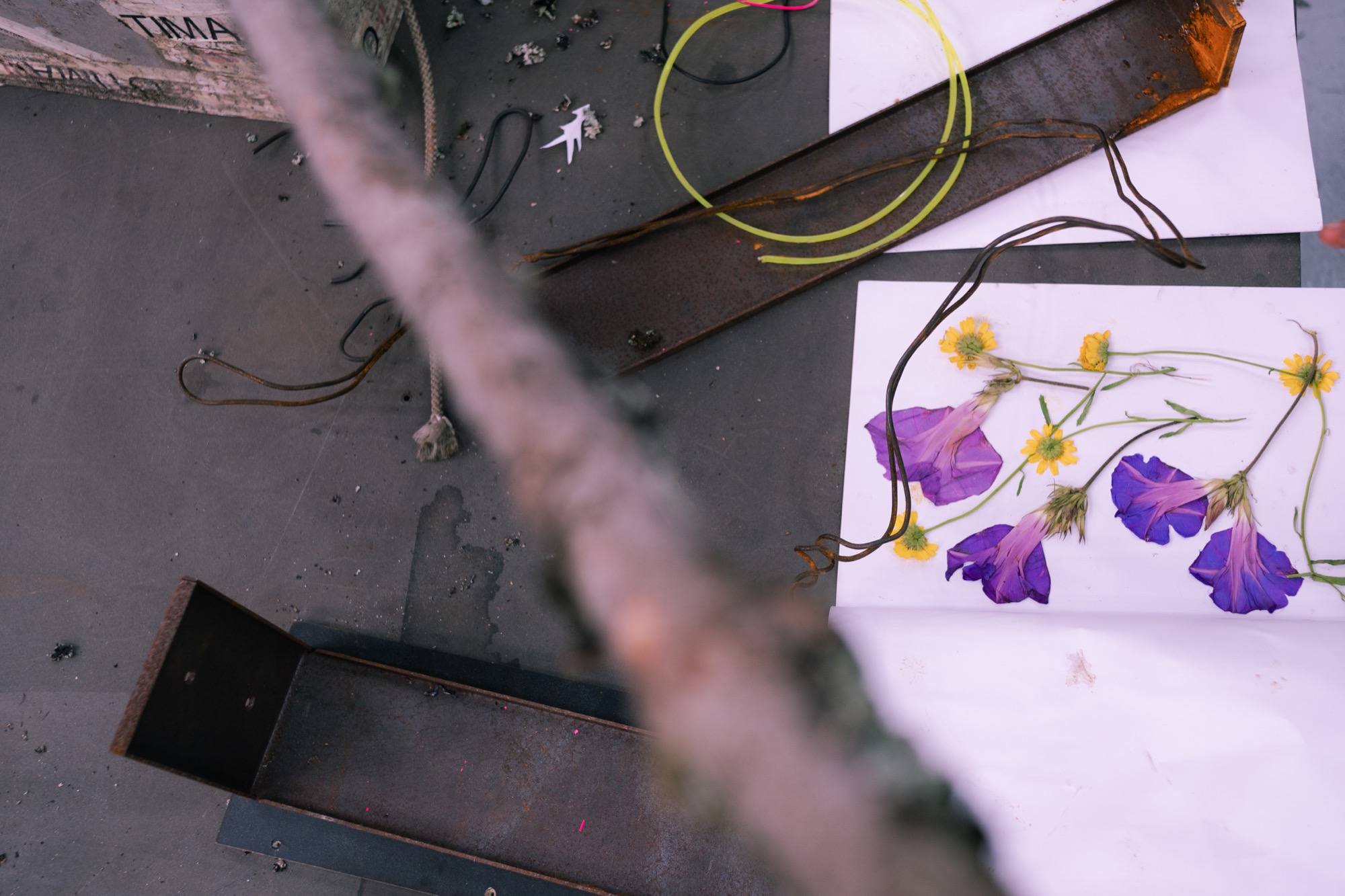
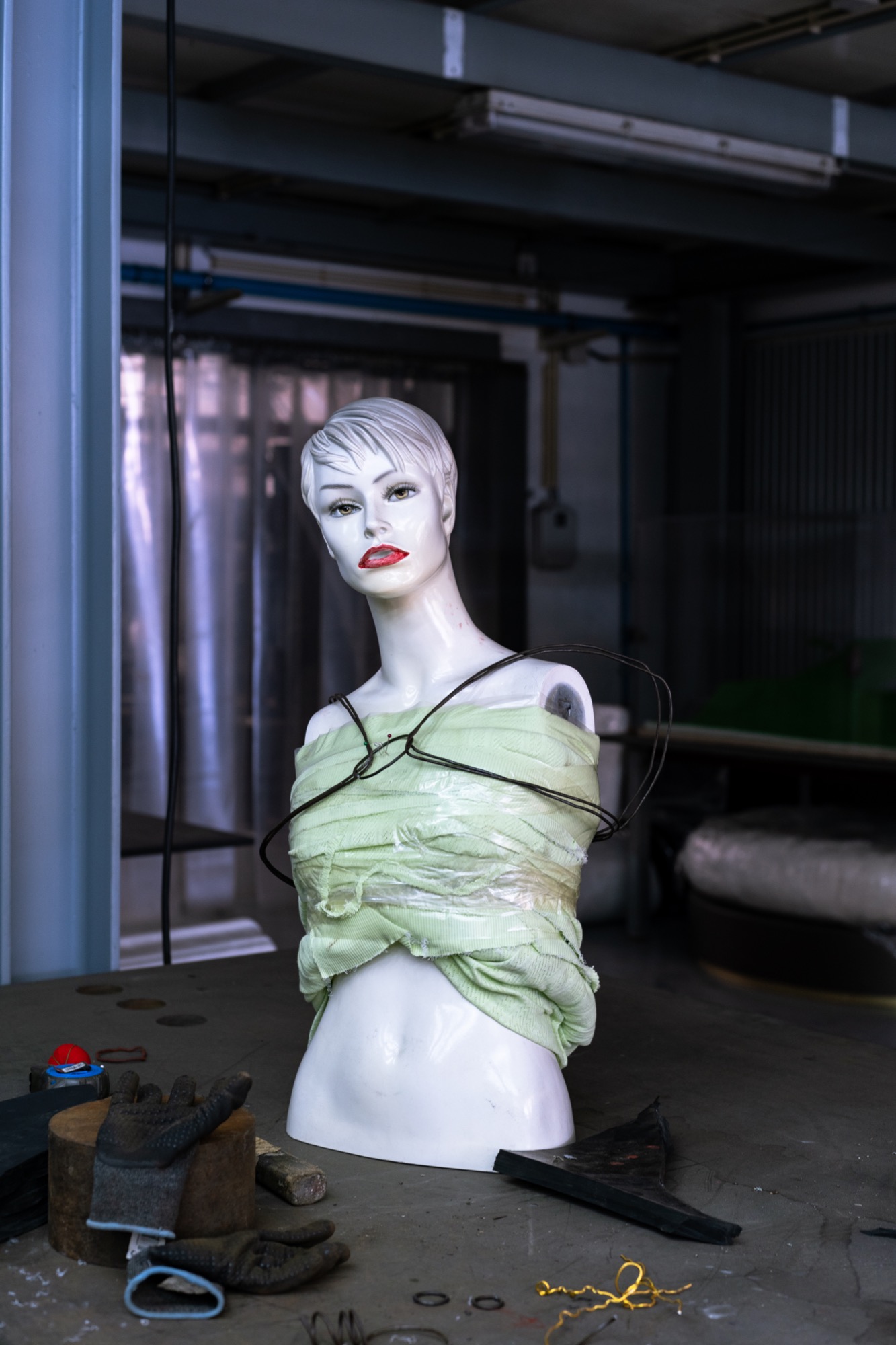
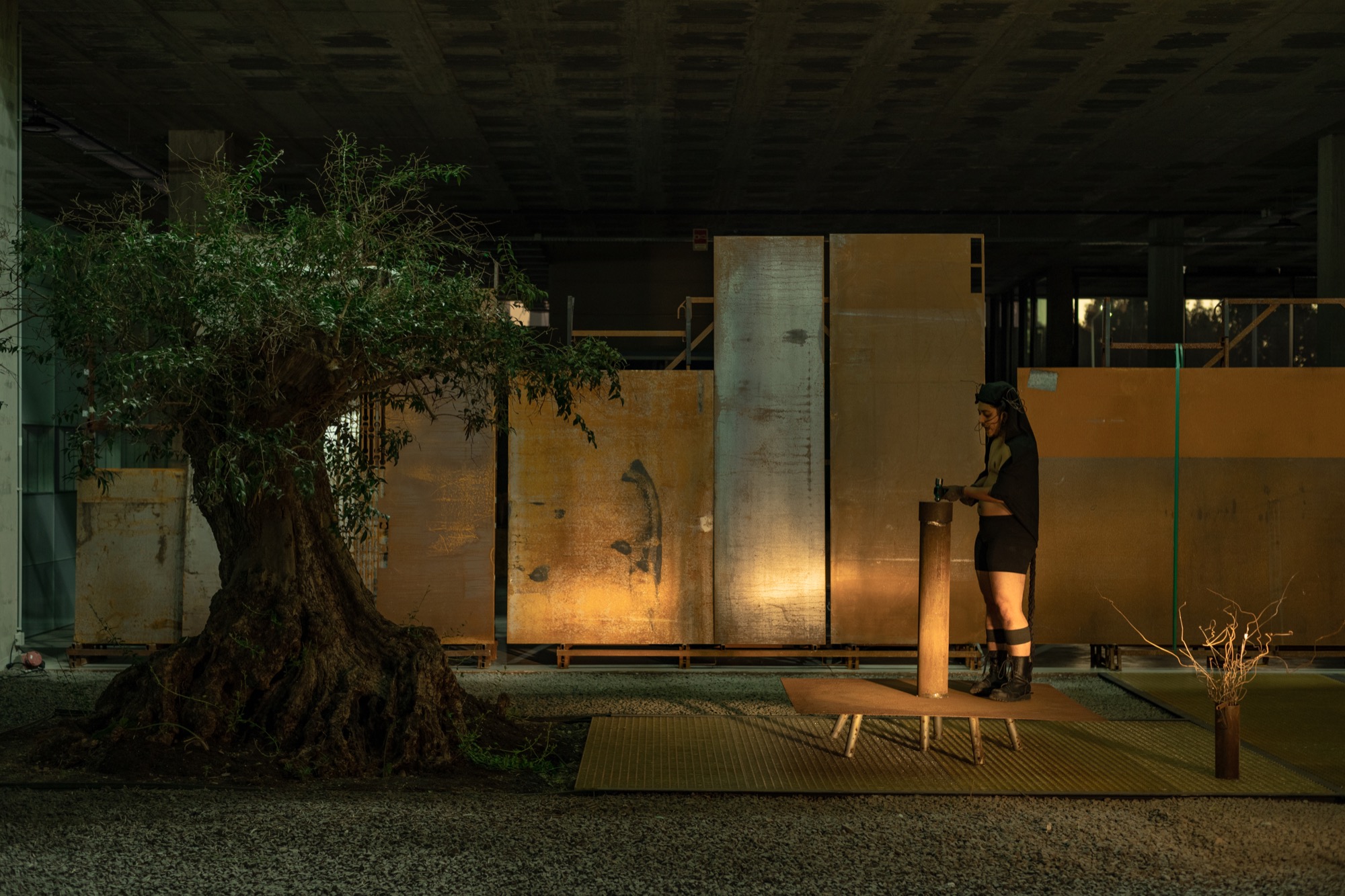
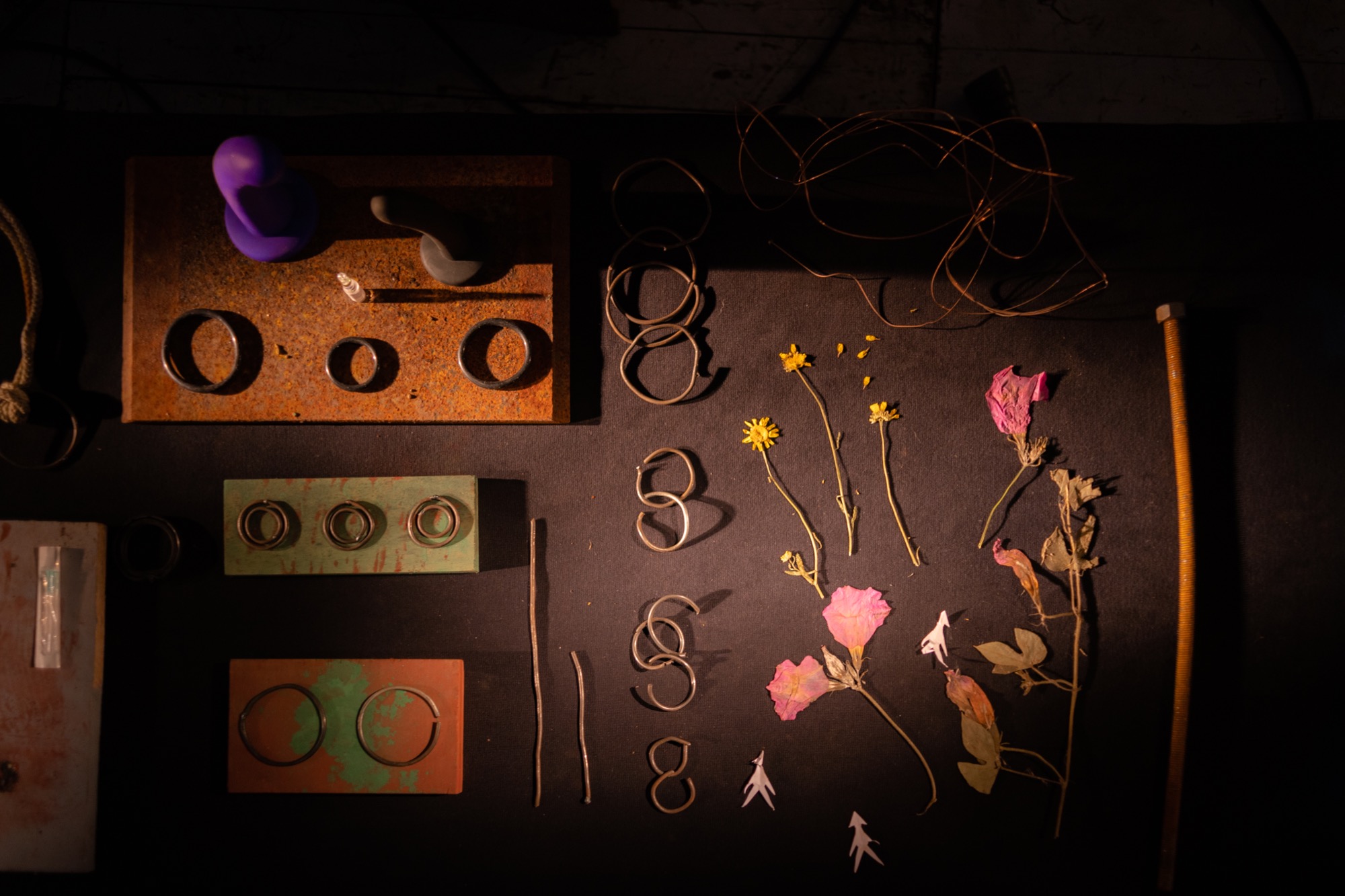

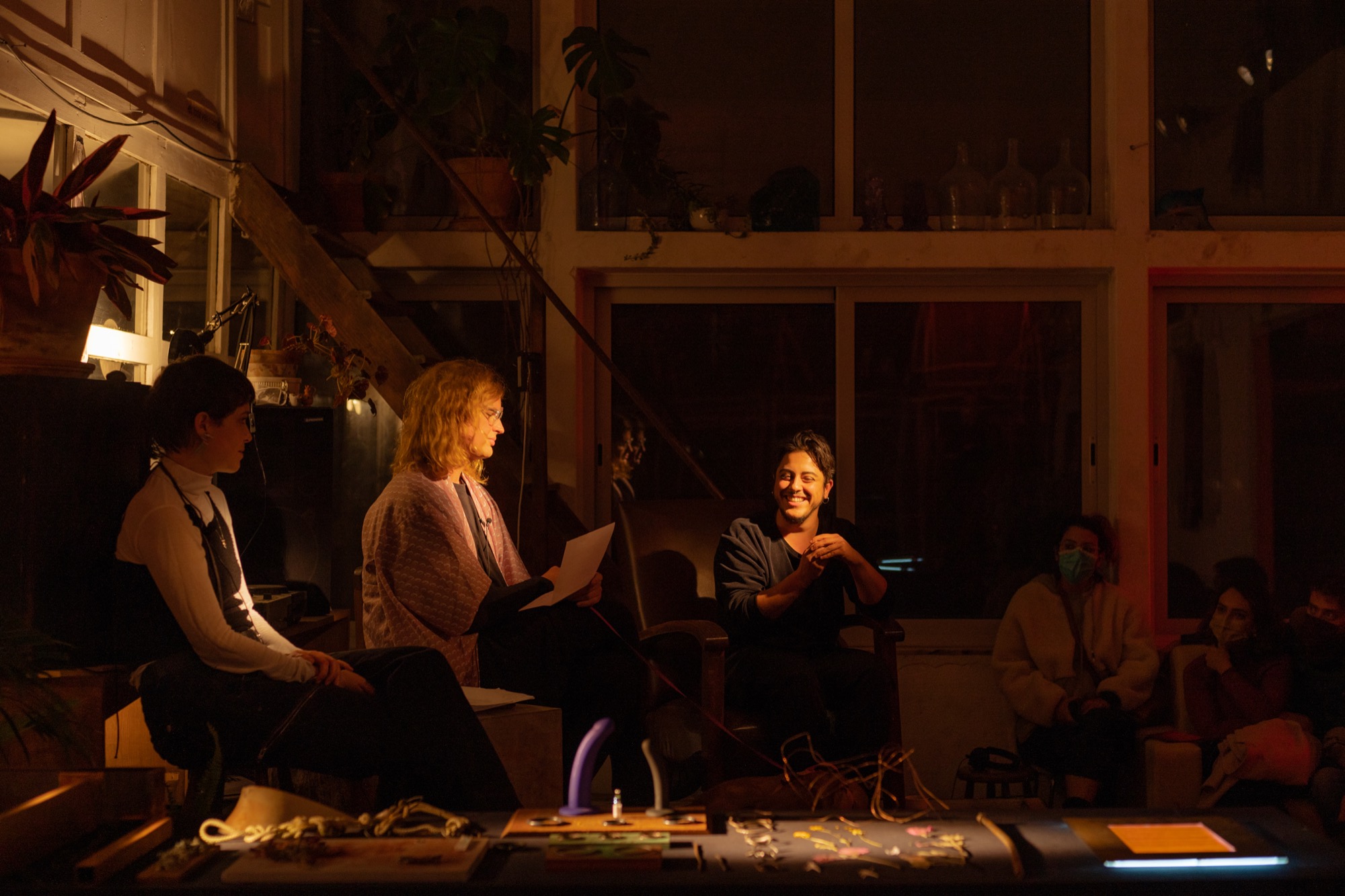
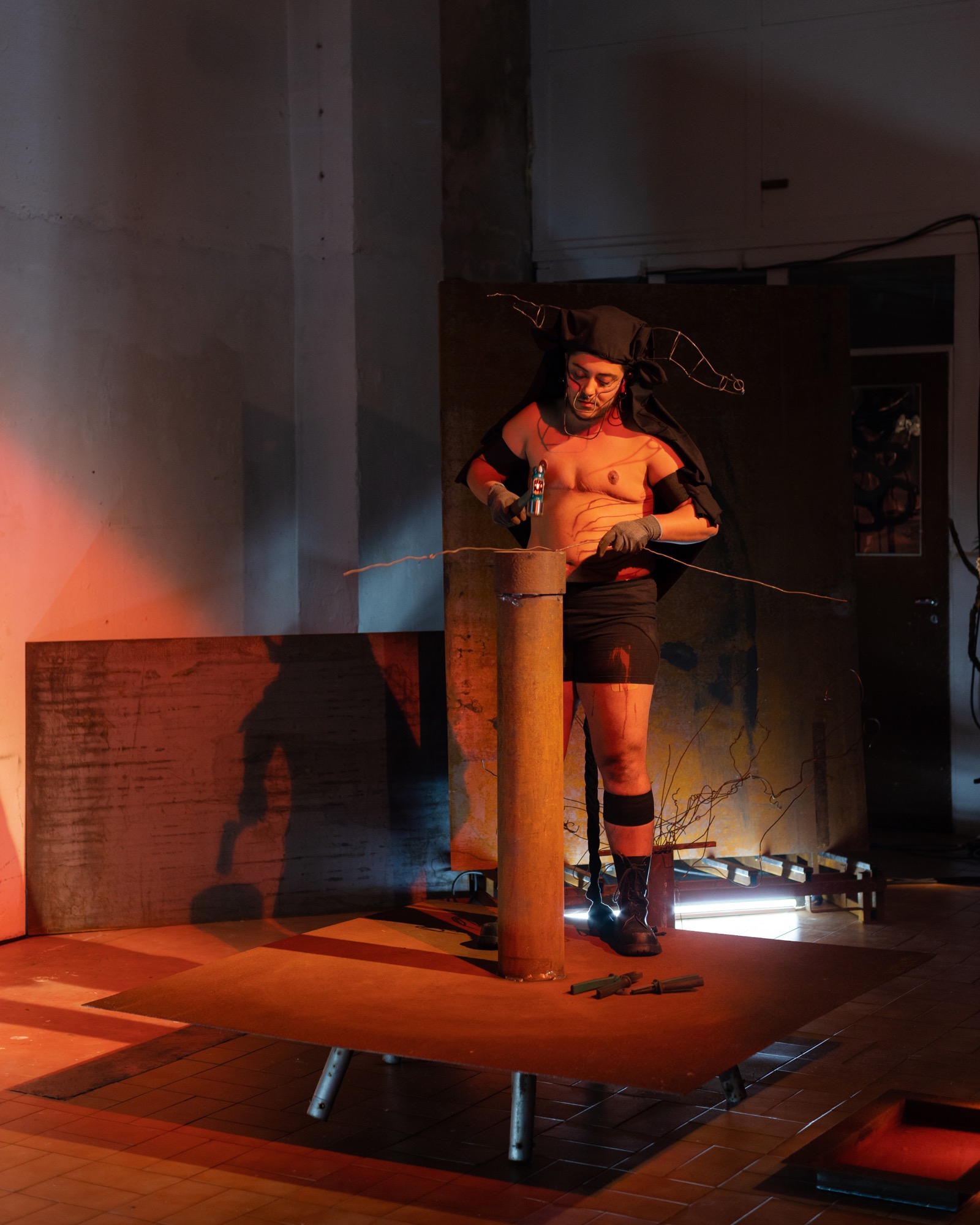
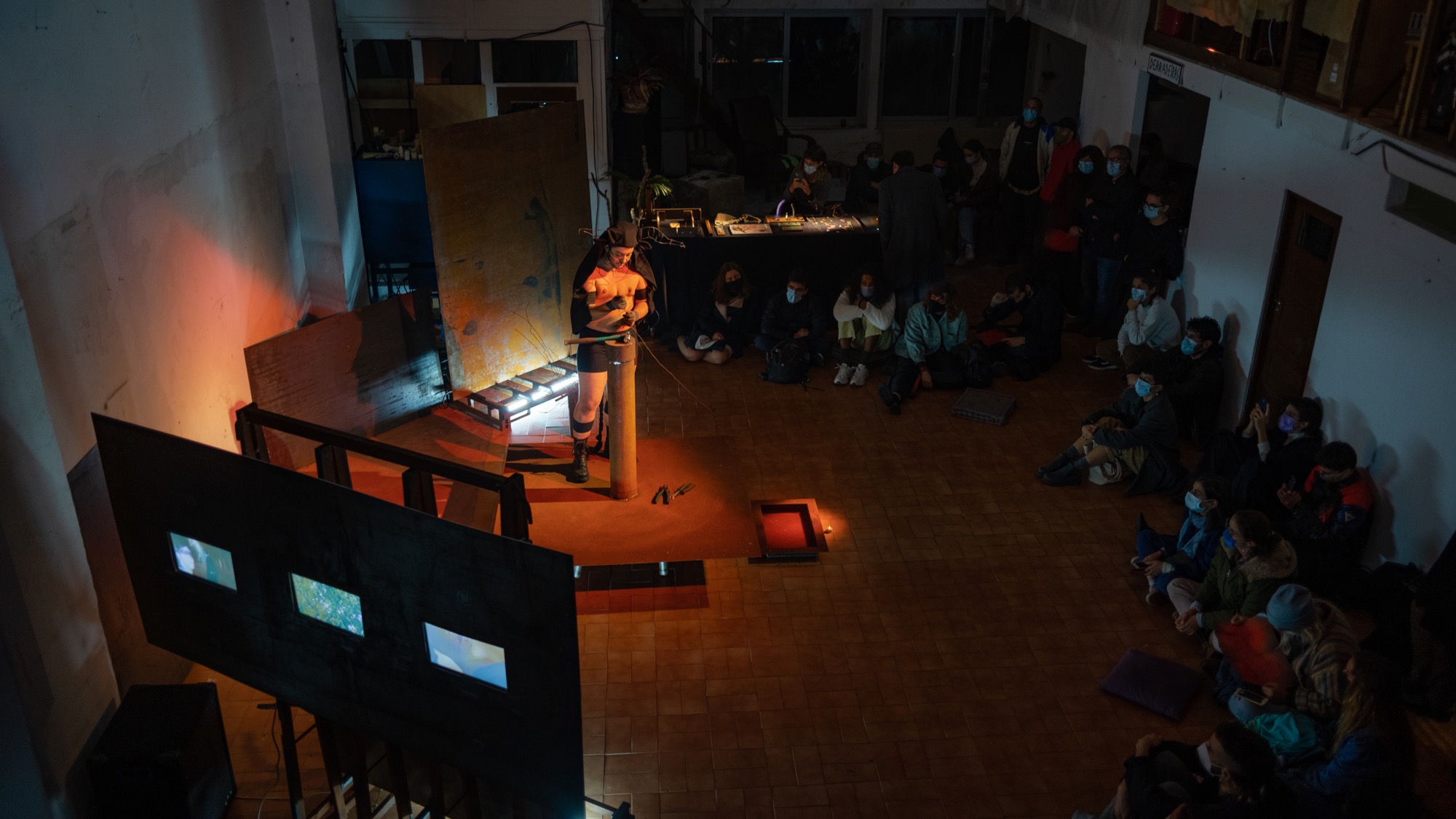
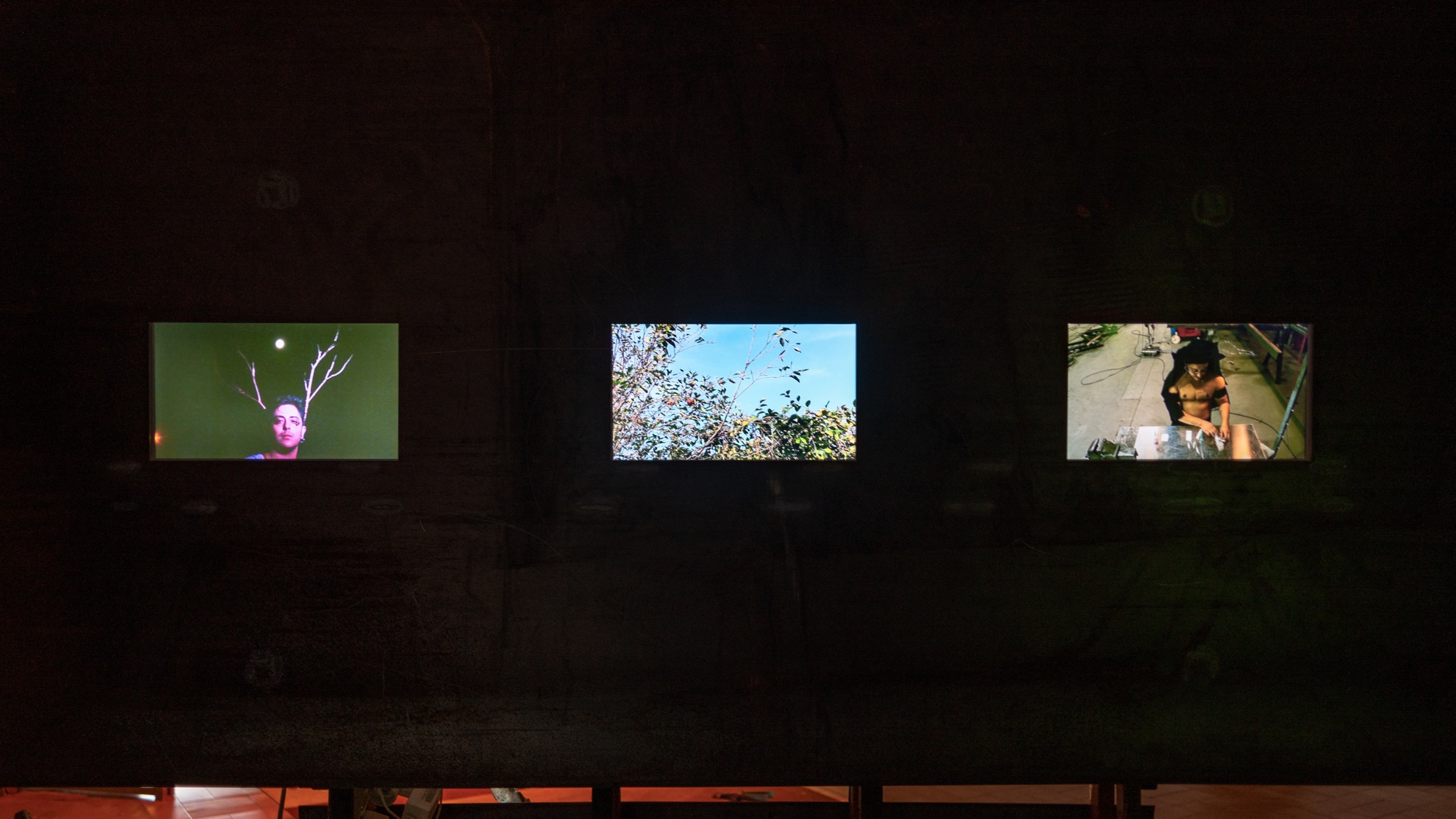
partnership with Pedreira
resources: iron, electronic material, painting, video
format: residency cycle 03
fotografia: Bruno Lança
No Entulho is open to visitors, if you want to know more please contact us.
Parque Industrial Amorim Rua Manuel Dias, 440 4495-129 Póvoa de Varzim
+351 252 023 590
info@noentulho.com